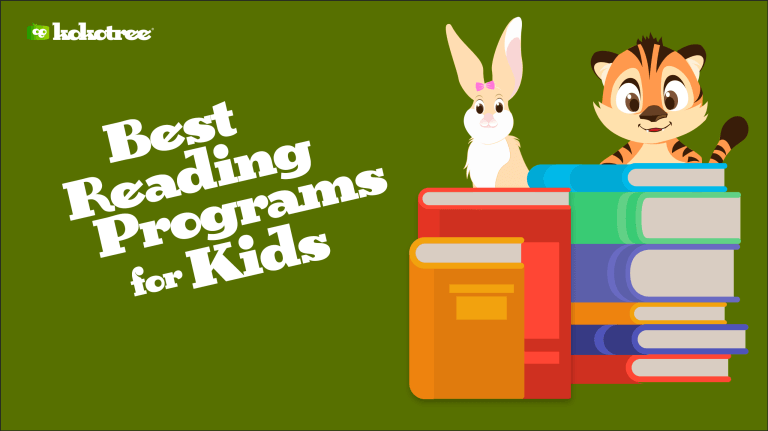

When it comes to the best reading programs for kids, there are many different options.
You could check out online programs that offer incentives for reading, like book clubs or membership sites. Whichever option you choose, ensure the program is age-appropriate and provides plenty of opportunities for your child to read books they enjoy.
Participating in a reading program will help create a love for reading in your child that will last a lifetime.
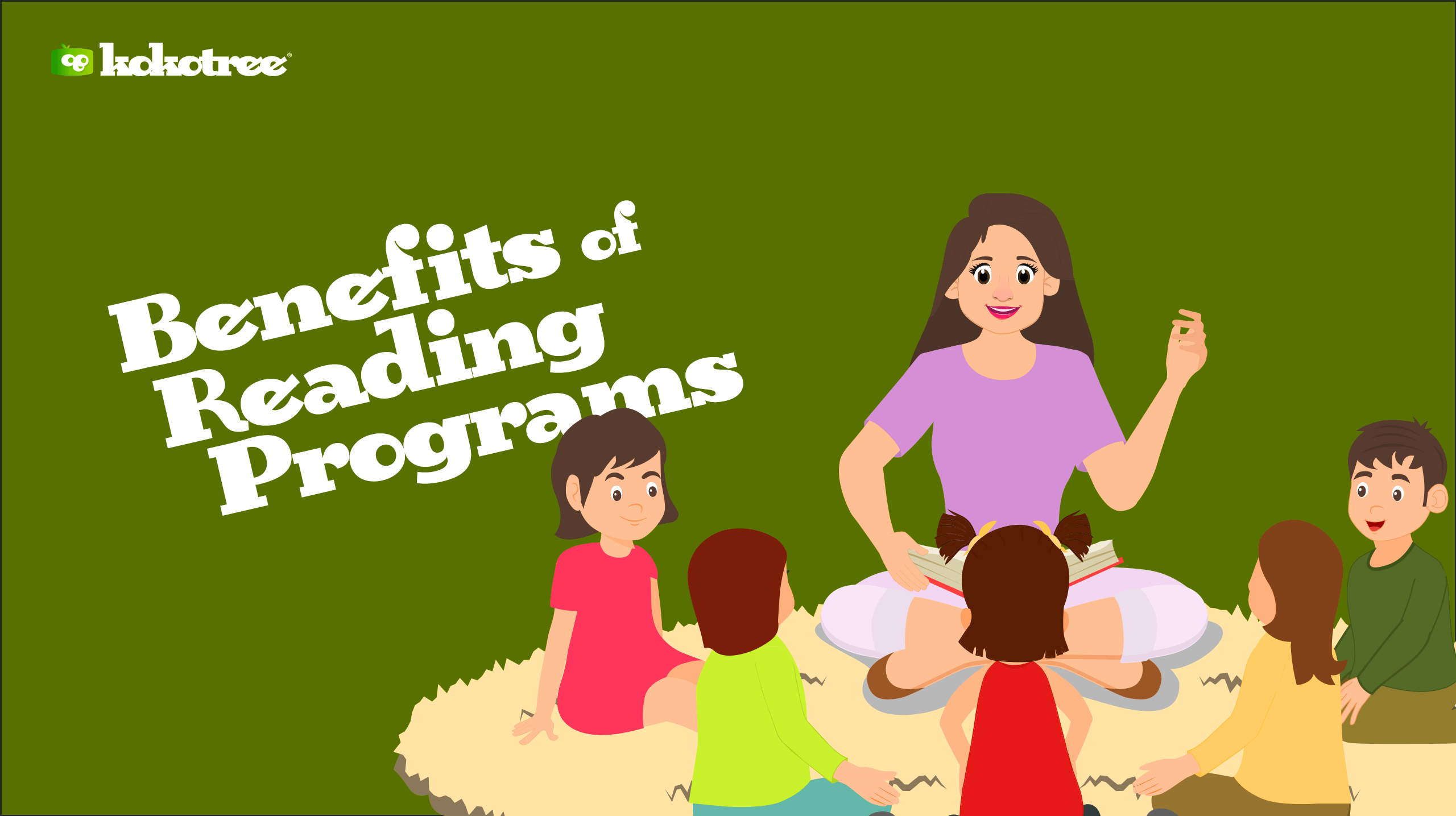
It’s no secret that reading is essential for kids. But did you know that taking part in a reading program can significantly impact their success in school?
Reading programs help kids develop strong literacy skills and provide an excellent opportunity for bonding with family and friends.
In addition, reading programs expose kids to a wide range of books, encouraging them to explore new genres and discover new interests. And finally, reading programs can help to instill a love of learning that will last a lifetime.
So if you’re looking for a way to help your child succeed in school, consider enrolling them in a reading program. It is the best decision you ever make.
One of the most important benefits of reading programs is their help with language development.
Reading is one of the best ways for children to learn new words and understand grammar.
Reading aloud to children can help them to develop a better understanding of spoken language.
Another benefit of reading programs for kids is encouraging a love of reading. Suppose children are exposed to a variety of books from a young age. In that case, they are more likely to develop a lifelong love of reading.
Reading programs can also introduce children to different genres of books, which can help them find the type of books they enjoy the most.
Reading programs can also help to improve concentration and focus in kids. When children are engrossed in a book, they can often focus for more extended periods than when they are engaged in other activities.
Reading can help kids to develop better attention span and memory recall skills.
Another benefit of reading programs for kids is that they can teach important life lessons. Many children’s books contain friendship, responsibility, and perseverance that can benefit kids to learn about.
Reading fiction books can help kids to develop empathy and understand different points of view.
In addition to teaching important life lessons, reading programs for kids can also promote imagination and creativity.
Children exposed to stories with rich descriptive language can help them better visualize the events taking place in the book.
Many fiction books contain characters that kids can relate to and look up to, which can inspire them to be creative in their own lives.
One of the most critical reasons reading programs are essential for kids is that they help develop and improve literacy skills.
Learning to read is an essential skill that children need to be successful in school and life.
Reading programs allow kids to practice and improve their reading skills.

Get free parenting tips, news, updates, and content from Kokotree.
Another benefit of reading programs is that they teach responsibility. Children participating in reading programs are responsible for choosing the books they want to read, keeping track of their progress, and returning the books on time.
This helps them learn to be responsible for their belongings and actions.
Reading programs can help to build self-confidence. When children see themselves progressing in their reading skills, it boosts their confidence and self-esteem.
They may also feel proud when they can read books that are challenging for them. This can lead to a love of learning and a lifetime of success.
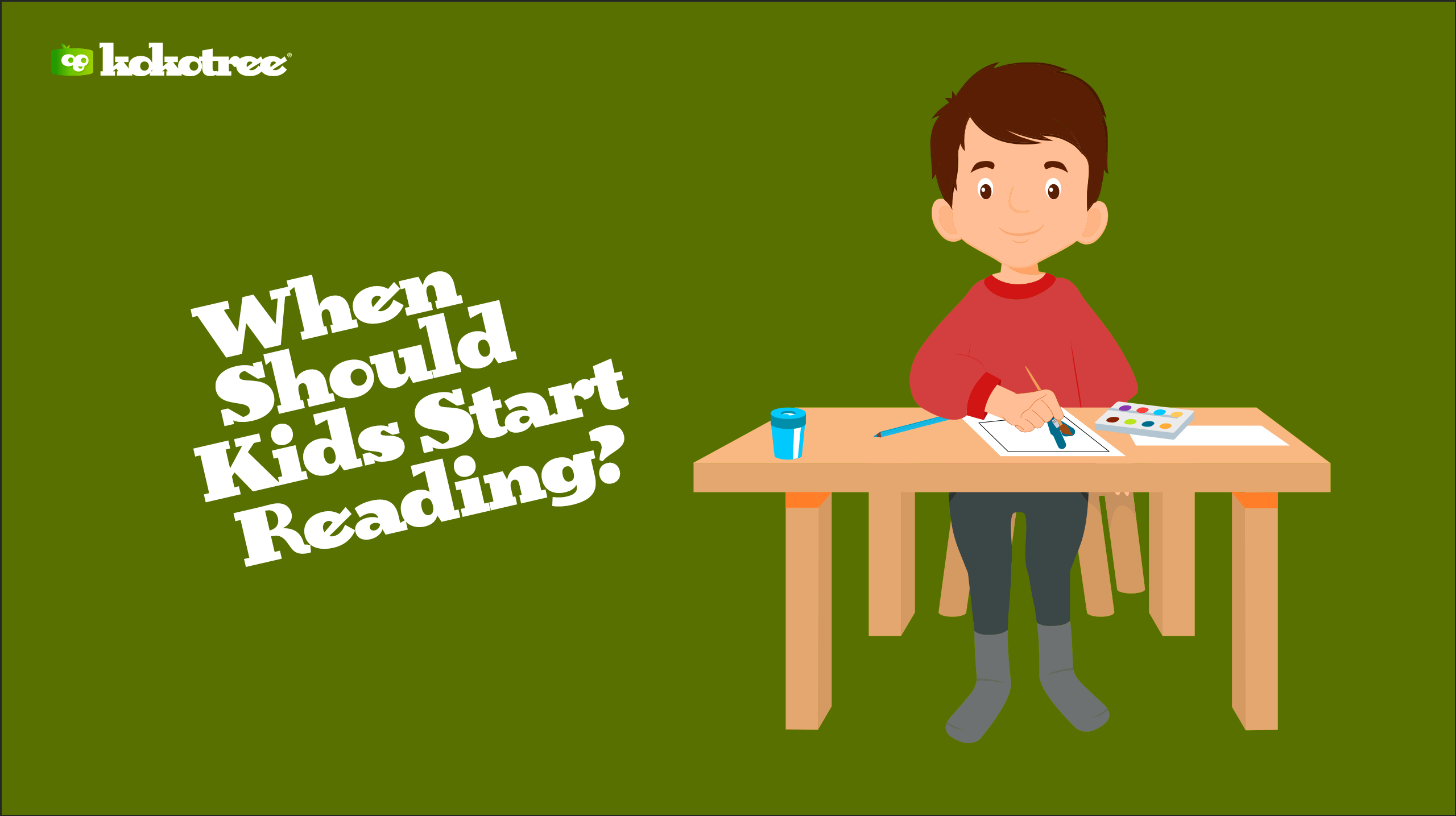
When do kids start reading? Believe it or not, some kids are ready as early as four years old!
Every child is different and will progress at their own pace, but if you’re wondering if your little one is ready for reading lessons, there are a few things you can look for.
Related info: When do kids learn to read?
In this section, we’ll discuss the signs that your child is ready to learn how to read, as well as some tips on how to get them started. Keep reading to find out more!
Recognizing letters is an essential pre-reading skill. If your child can identify at least a few letters of the alphabet, they are likely ready to learn how to read.
If your child starts recognizing some words, it may signify that they are ready to learn to read.
Try pointing to words and seeing if your child can tell you what they say. If they can, it’s a good indication that they are ready to learn how to read.
Knowing the sound that each letter makes is another essential pre-reading skill. If your child can say each letter’s sound, they are likely ready to learn how to read.
If your child is interested in books, it may signify that they are ready to learn how to read. Try reading books with your child and see if they seem interested in the stories. If they are, it’s good to start teaching them how to read.
Children need to be able to sit still for short periods to learn how to read. If your child can sit still for at least a few minutes, it’s a good sign that they are ready to learn to read.
For children to learn how to read, they need to be able to follow simple instructions. If your child can follow simple instructions, such as “Please put your book away,” it’s a good sign that they are ready to start learning how to read.
This is a common complaint among parents of kids in reading programs, but there’s a good reason for it!
Reading the same book multiple times helps children to solidify their understanding of the story and the words. It also allows them to build confidence in their reading skills.
So, even though it may be tedious for you, it’s a great learning tool for your child.
There are many different ways that you can teach a child to read. One of the most important things is to expose your child to reading at an early age.
This will help them become familiar with books and letters, making learning to read much easier when they reach school age. You can start by reading simple stories or nursery rhymes to your child.
One of the best ways to teach a child to read is by providing lots of opportunities for reading practice. This can mean sharing books, ensuring access to plenty of books in their home and school, or helping them practice letter sounds during playtime.
Related post: How to teach phonics step by step.
It’s also essential to provide positive reinforcement for your child whenever you see them reading or learning new literacy skills.
There are also some strategies that you can use to help your child build their reading skills and confidence. For example, early picture books can help children learn to read by sight while engaging in word games, or later interactive storybooks can help them practice and improve their phonics skills.
If you are looking for additional support in teaching your child to read, many online and offline resources are available. You can talk to your child’s teacher or educational specialist to get advice on different methods and strategies that might work best for your child. As long as you remain patient and consistent, your child will be reading in no time!
The most important thing is to keep trying different methods with your child until you find something that works for them. With much love and support, your child will succeed and develop a lifelong passion for reading!
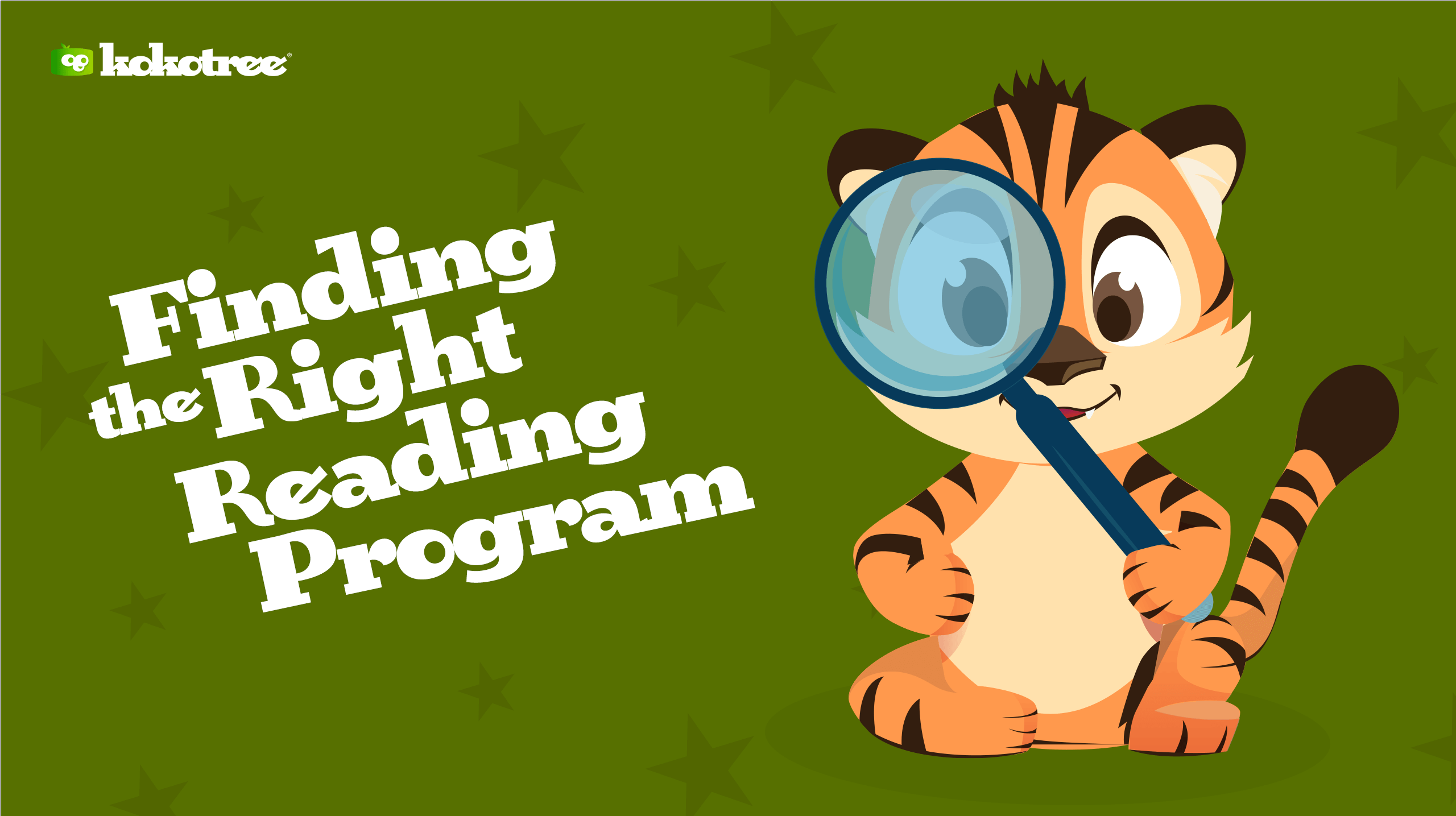
Finding the right reading program for your child can be a daunting task, and there are many options available, each with its pros and cons.
How do you know which one is right for your child? This blog post will overview some of the most popular reading programs and help you decide which one is right for your family. Happy reading!
If your child is interested in dinosaurs, look for reading programs that incorporate that theme. If she loves animals, look for books with animal characters.
Make sure the program you choose is appropriate for your child’s age and developmental level. If she is starting to read, look for a program that will teach her the basics of reading.
If she is a more advanced reader, look for a program that will challenge her and help her to improve her reading skills.
Some children learn best when they can move at their own pace, while others do better when given a more structured approach.
Please choose a program that will allow your child to learn in the best way for her.
Many great reading programs are available, but only some are affordable. Find one that fits your budget and that you feel comfortable paying for.
Before you choose a program, read reviews from other parents or experts to understand what others think of it.
This can help you narrow your choices and find the right program for your family.
Suppose you need help deciding which program to choose; talk to your child’s teacher for guidance. They can recommend a specific program or give you some tips on what to look for in a good reading program.
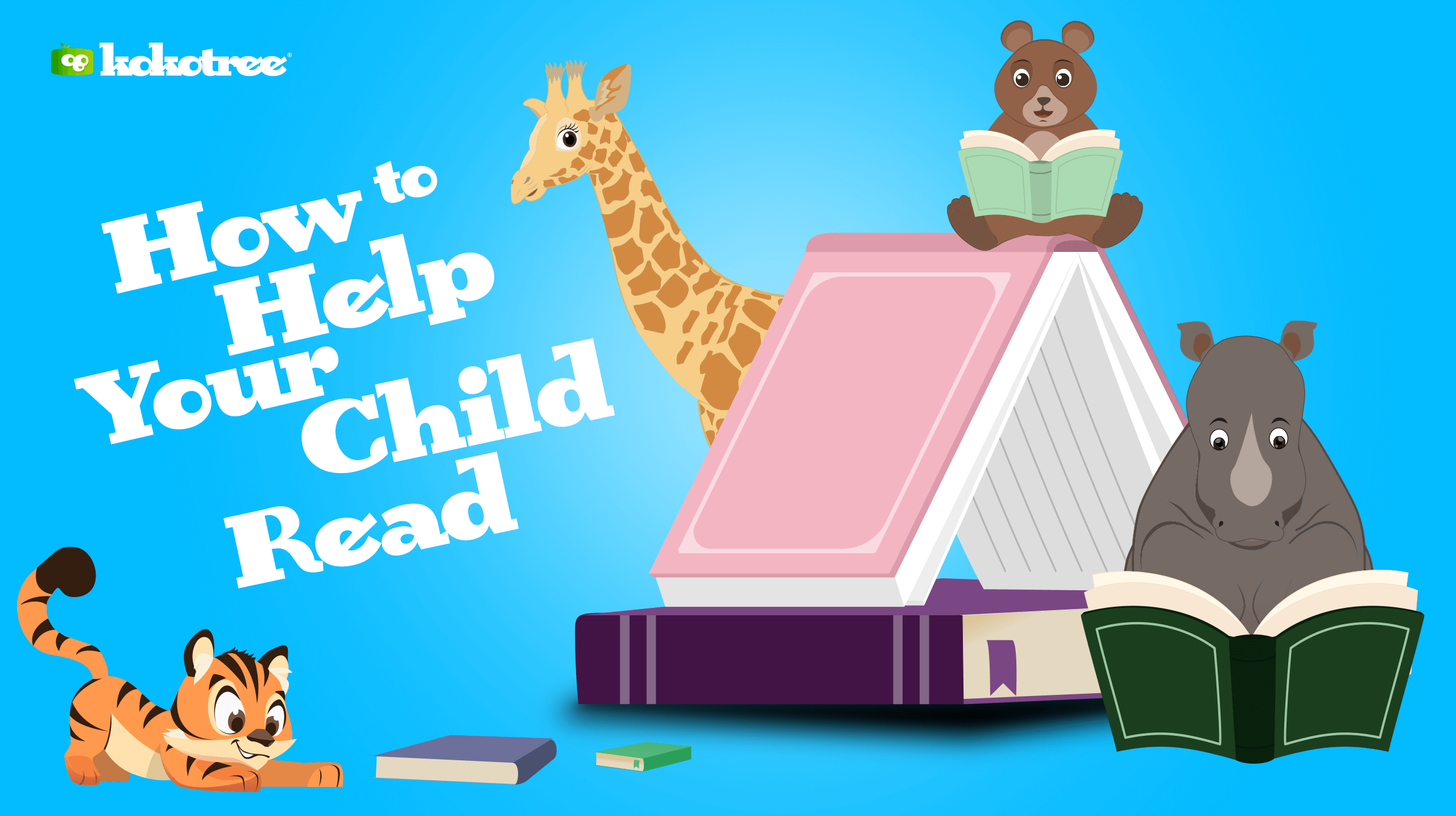
If your child is in a reading program, you can do a few things to help them get the most out of it. First, be supportive and encouraging.
Next, make sure they have plenty of time to read each day. Finally, ensure they have an excellent place to read where they can concentrate.
These tips will help your child succeed in their reading program!
One of the best ways to help your child get the most out of their reading program is to read with them.
Reading together allows you to model good reading habits and help your child with any difficult words or concepts.
It also allows you to bond with your child and make reading a fun and enjoyable activity.
Another way to help your child get the most out of their reading program is to encourage them to read every day.
Make reading a part of their daily routine by setting aside time each day for them to read.
You can also put books where they will see them often, such as their bedroom or the kitchen table.
It is also essential to help your child choose books they enjoy. If they are not interested in the book, they are less likely to want to read it.
Talk to their teacher or librarian about what type of books your child might like, or let them browse the shelves and choose a book themselves.
Another way to help your child get the most out of their reading program is to talk about what they are reading. Ask them questions about the book, such as what they liked or didn’t like and why.
This will help them to think critically about what they are reading and understand it better.
Please encourage your child to ask questions when they are reading. I
f they don’t understand something, encourage them to ask their teacher or look it up in a dictionary or encyclopedia.
This will help them learn more about the topic and improve their comprehension skills.
Make sure your child is reading books at their level. If they struggle with a book, it may be too difficult for them, and they will become discouraged.
Talk to their teacher or librarian about finding books at the right level for your child.
Finally, reward your child’s progress along the way. This will motivate them to keep reading and progressing in their skills.
You can give them small rewards, such as a sticker or a new book, when they reach a milestone.
Reading programs are essential because they can help your child improve their reading skills. Follow these tips to choose the right program for your child and help them get the most out of it.
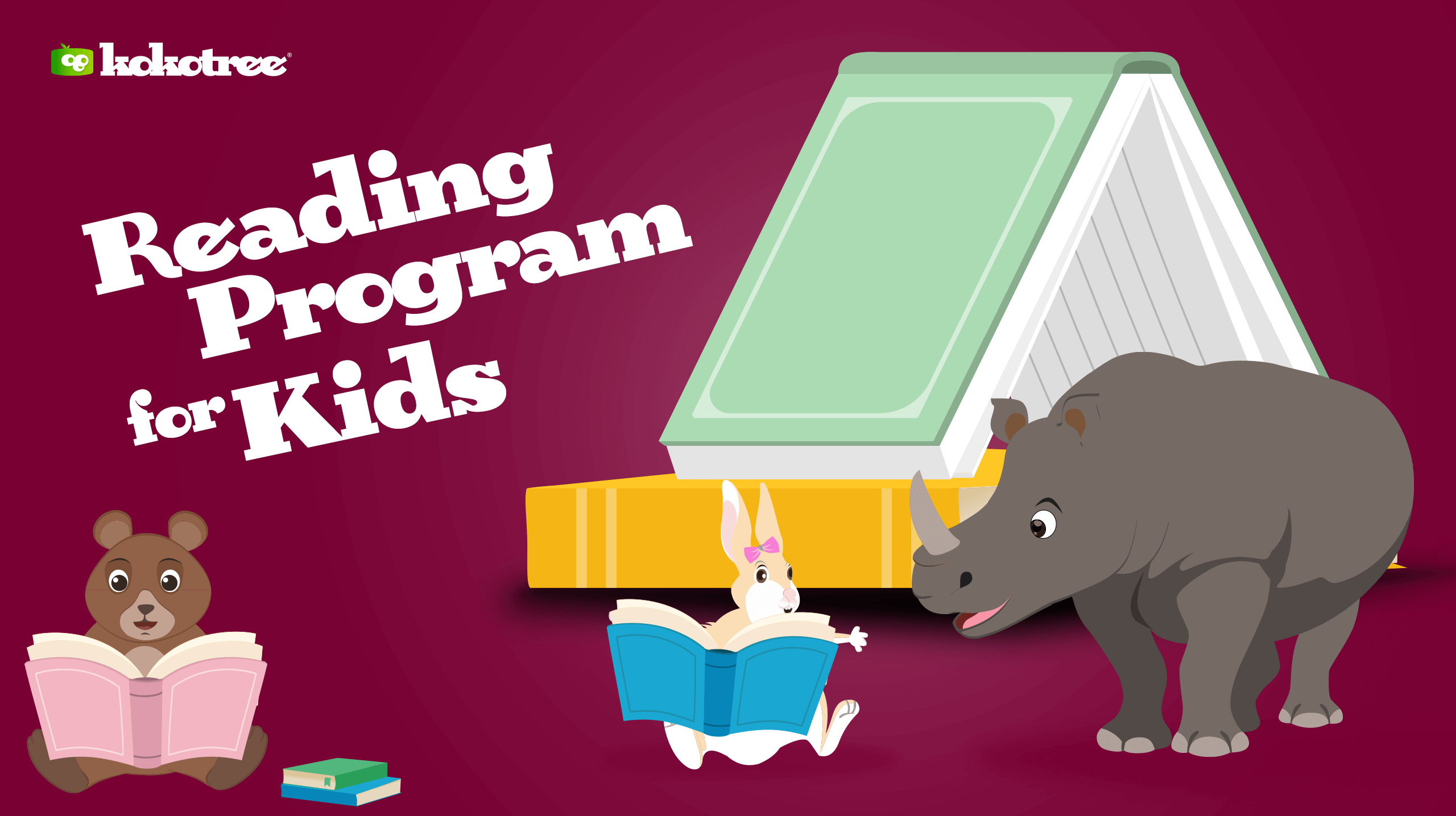
Are you looking for a reading program for your child? Many different programs are available, and deciding which is suitable for your family can take time and effort.
This section will introduce you to some of the kids’ most popular reading programs. We’ll also discuss the pros and cons of each program so that you can make an informed decision about which one is right for your child. Let’s get started!
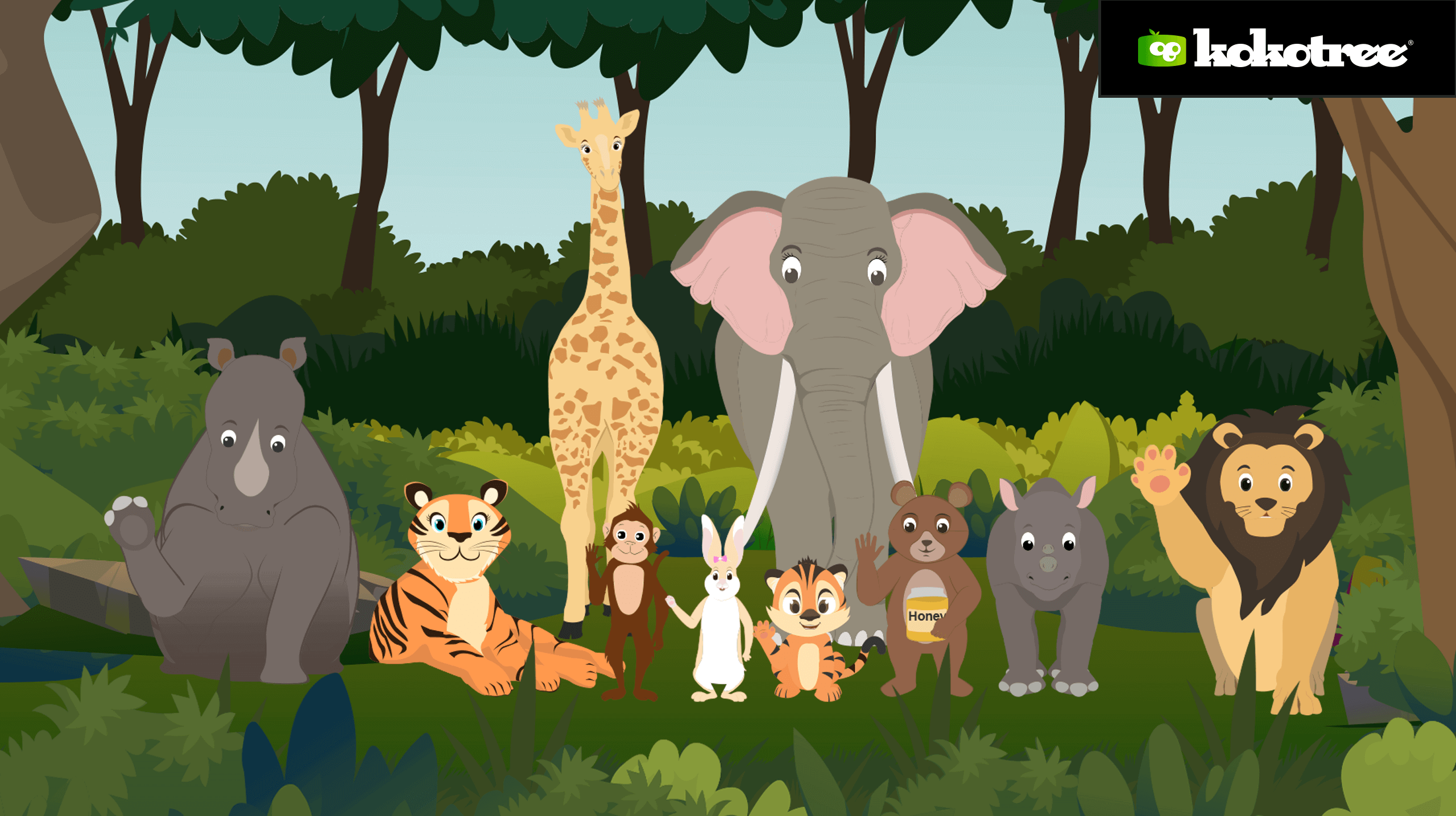
Kokotree is a new educational streaming service offering unique animated videos for toddlers and preschoolers to learn pre-skills and early learning topics.
We offer an educational app for kids and high-quality animated videos that teach through engaging stories, songs, and games.
The Little Seeds Program for toddlers includes a collection of nursery rhymes and songs to spark young learners’ interest in all the basic skills. Kids learn numbers, letters, colors, rhyming, sounds, creativity, imagination, and more when starting their educational journey.
The Budding Sprouts Program for preschoolers starts kids on their first lessons—taught by our cute characters—based on a STEAM preschool curriculum. We cover science, math, reading, and language through innovative storytelling and offline reinforcement activities. The Early Reader Series teaches kids to read through phonics, whole language, sight words, and more.
The Kokotree learning videos are highly entertaining and educational for young learners.
Reading Eggs is a multi-award-winning learning program that helps children learn to read. It is recommended as one of the best reading apps for kids by parents and teachers.
This app is available on iPhone, iPad, and Android devices. Reading Eggs is a complete learn-to-read system for children aged 2-13. It covers the five essential components of reading: Phonics, phonemic awareness, vocabulary, fluency, and comprehension.
Parents can see instant results in their dashboard and receive detailed progress reports, which show exactly where their child is improving and where extra attention is needed. Children will learn how to read using interactive games, guided reading lessons, fun activities, and over 2,000 digital storybooks.
If you’re looking for a digital reading program to help your child learn to read, Hooked on Phonics is a great option. Based on the phonics learn-to-read system, Hooked on Phonics promotes reading development and is suitable for children 3-7.
Early learners enjoy songs, games, and interactive lessons in this literacy app that teaches print concepts, phonological awareness, and phonics word recognition. Hooked on Phonics is available to download for iOS (iPhone and iPad) and Android devices and desktop computers (Windows and Mac).
Hooked on Phonics contains 36 progressive lessons featuring leveled learning activities that cover key building blocks of reading: short vowels, simple plurals, simple compound words, beginning and ending consonant digraphs and blends, two-syllable words, and sight words.
Each lesson concludes with a story specially written with the words just learned. With Hooked on Phonics, your child will have fun learning the skills they need to become confident readers.
Reading Rockets is a website that offers a variety of resources for parents and teachers who want to help kids learn to read. The website features articles, tips, and advice from reading experts. Additionally, the website offers a variety of free online games and activities to help kids improve their reading skills.
Scholastic Learn at Home is a website that offers a variety of resources for parents and teachers who want to help kids learn at home. The website features articles, tips, and advice from education experts. Additionally, the website offers a variety of free online games and activities to help kids improve their reading skills.
PBS Kids is a website that offers a variety of resources for parents and teachers who want to help kids learn at home. The website features articles, tips, and advice from education experts. Additionally, the website offers a variety of free online games and activities to help kids improve their reading skills. PBS Kids also has a TV channel that airs educational shows for kids.
The National Education Association is an organization that provides resources for educators across the United States. The organization’s website features articles, tips, and advice from education experts. Additionally, the website offers a variety of free online games and activities to help kids improve their reading skills.
Starfall is an excellent app for kids who want to learn to read excitingly and interactively. The app offers a variety of activities, games, videos, and songs that teach children the basics of reading, counting, and identifying colors.
The best part about Starfall is that it’s free to download and use on your iOS or Android device, or you can access it from your desktop computer. If you’re looking for an educational app for your preschooler, Starfall is a great option.
Are you looking for a fun, educational game site for kids? Look no further than FunBrain.com! Offering a wide variety of interactive games and activities, FunBrain is perfect for kids in grades K-8. Whether your child is looking to brush up on their math skills or learn more about reading and problem solving, they’re sure to find something they’ll enjoy on FunBrain.
Plus, parents and teachers will find plenty of resources and tools to help them support their student’s learning. Best of all, FunBrain is entirely free to use – however; there are some in-app purchases available if you want to access additional content.
ABCya! is a website that offers free resources to help kids learn to read. The site features a variety of games and activities, as well as printable worksheets. Additionally, the site tracks each child’s progress and provides personalized recommendations to help them improve.
There are many different approaches you can take to teaching young children to read, and there is no one “right” method that will work for every child. Some common tips for encouraging your toddler’s literacy skills include:
The key to teaching your toddler to read is patience and consistency, as children learn at different speeds and in unique ways.
Every child develops literacy skills at their own pace. Some general guidelines for toddlers’ reading abilities include:
There is no set age at which a child should start reading. Most children begin to show signs of literacy skills around the age of 2 and will typically be able to read simple text with some guidance by age 3-4.
As every child develops literacy skills at their own pace, it is vital to encourage and support your child’s efforts and offer opportunities to practice reading in a supportive, age-appropriate environment.
There is no set number of sight words that a 2-year-old should know. The key is to provide your child with opportunities to learn new words and develop their understanding of language and letter sounds.
Some common strategies for teaching children sight words include pointing out specific letters in the context of a word or sounding out the first few letters of a word and having them guess the rest.
You can also use picture books to help your child learn new words, as many early readers rely heavily on context clues to figure out unfamiliar words.
You can work with your child’s teacher or a reading specialist to create an individualized learning plan to help your child continue developing their literacy skills.
There are many different reading activities that you can do with preschoolers, including playing games like “I Spy” or “What’s Missing?” to help them practice letter recognition and phonemic awareness.
You can also engage your child in storytime by reading aloud picture books or asking them to point out or spell letters and words as you read.
You may want to encourage your child to read along with you or work on developing their independent reading skills by providing them with books at an appropriate reading level and praising their efforts.
Learning to read is a crucial part of early childhood development, as it lays the foundation for future academic success and supports overall cognitive development.
That being said, it is vital to provide your child with opportunities to learn basic literacy skills in a supportive and age-appropriate environment, which may include working with their teacher or a reading specialist to create an individualized learning plan.
You can help foster your child’s love of reading by reading to them regularly, exposing them to different genres and types of text, and making reading an enjoyable part of your daily routine.
Some common strategies include:
You can also use interactive activities like games or storytime to help grow your child’s interest in reading and encourage them to develop their literacy skills.
There is no “right” way to teach a 4-year-old to read, as every child develops literacy skills at their own pace.
Some common strategies for supporting early reading development include:
While every child learns to read at their own pace, there are some things that parents can do to help their kindergarteners get a head start.
One of the most important things is creating a print-rich home environment. This means ensuring plenty of books, magazines, and other materials for your child to read. It’s also important to read aloud with your child daily.
This will help her to develop an appreciation for books, and she’ll also be able to hear how words are pronounced.
Play word games, solve puzzles, and try other activities to help your child learn to love reading. With a little effort, you can help your kindergartener develop the skills she needs to become a successful reader.
When it comes to teaching young children how to read, there is no one-size-fits-all solution. Different children will respond better to various programs, depending on their learning styles. However, there are some general principles that all good reading programs for kindergartners should follow:
Choosing the right one for your child can be challenging with so many different programs available. However, following these guidelines will help you narrow down your options and find a program that is well-suited to your child’s needs.
When finding the right books for your 5-year-old, you’ll want to consider their reading level and interests. At this age, most kids are just beginning to develop reading skills and will likely be interested in simple stories with plenty of pictures.
Fortunately, a wide variety of great books are available for 5-year-olds, from picture books to easy readers. Here are a few examples to get you started:
Picture books are an excellent option for beginning readers, and they typically have large print and many illustrations, making them perfect for kids who are just starting to read. Some popular titles for 5-year-olds include “The Cat in the Hat,” “Make Way for Ducklings,” and “Corduroy.”
Easy readers are slightly more challenging than picture books, but they’re still an excellent option for beginning readers. They typically have shorter paragraphs and more straightforward vocabulary, making them perfect for kids just starting to read. Some popular titles for 5-year-olds include “The Very Hungry Caterpillar” and “Where The Wild Things Are.”
Chapter books are an excellent option for kids ready for more challenging reading. They typically have longer chapters and more complex storylines, making them perfect for kids ready to move on from easy readers. Some popular chapter books for 5-year-olds include “The Complete Tales of Winnie the Pooh,” “The Wonderful Wizard of Oz,” “Charlotte’s Web,” “Raggedy Ann Stories,” and “Peter Pan.”
Reading, writing, and speaking are the foundations of literacy. To help kindergarten students develop these critical skills, teachers can incorporate various literacy activities into their lesson plans.
For example, storytime is a great way to introduce kids to the joys of reading. Rhyming games and song singing can help with phonemic awareness, an essential pre-reading skill. And creative writing activities give kids a chance to practice putting their thoughts into words.
Teachers can provide students with a solid foundation to build their reading, writing, and speaking skills by providing opportunities for engaging in various literacy activities.
According to many experts, most children are developmentally ready to learn to read by age five. This is based on many factors, including the child’s interest in books and their ability to recognize words and sounds.
In addition, most five-year-olds have the attention span and fine motor skills necessary to begin reading. Of course, every child develops at their own pace, so there are always exceptions to the rule.
However, if your child is showing a desire to learn to read, they will likely be able to do so with the proper support and instruction. If you have any concerns, it is always best to speak to your child’s teacher or doctor.
They will be able to assess your child’s individual needs and offer advice on how to best support their learning.
In the United States, the average kindergarten class size is 20 students. Of those 20 students, approximately 80% will be able to read at a basic level by the end of the school year.
However, only 50% will be reading at grade level. While there is some variability from state to state, these numbers generally represent kindergarten reading skills across the country.
Parents and teachers need to provide plenty of practice opportunities to ensure that all children have a chance to develop their reading skills. This can include reading aloud at home, visits to the library, and activities such as sign language or finger painting that help children associate words with meaning. With extra help, every child can learn to love reading.
Most 5-year-olds can spend about 15-20 minutes reading each day. This may not seem like a lot, but it can significantly affect their reading ability.
Research has shown that 10 minutes of reading each day can increase a child’s reading level by up to two years. Of course, every child is different, and some may be able to read for more extended periods while others may need a few shorter sessions throughout the day.
Find a reading schedule that works for your child and fits into your family’s daily routine. By carving out some time each day for reading, you can help your child develop a love of books and lay the foundation for a lifetime of learning.
Reading programs for kids come in all shapes and sizes, but they all have the same goal: to help children learn to read.
This article lists ten reading programs to help your child improve their reading skills. We’ve also provided a brief description of each program so you can decide which one is right for your family.
No matter which program you choose, be sure to encourage your child and praise their accomplishments. Reading may seem daunting, but with the right tools and support, your child will be able to succeed.




